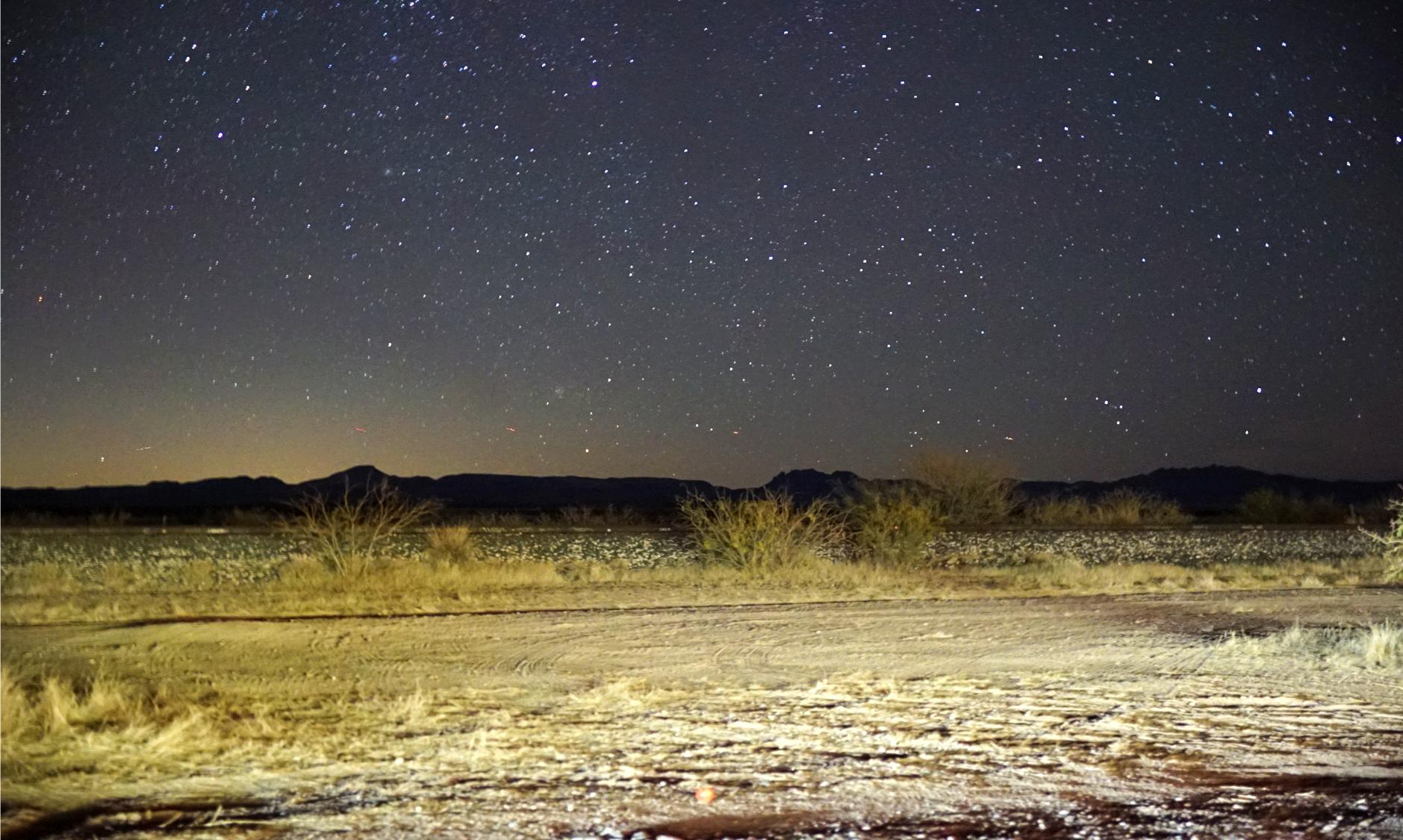The oil and natural gas wells have slowly disappeared, giving way to a Wild West landscape of hills and dry grass. It took a 90-minute flight to reach Midland International Air & Space Port from Houston, followed by a three-hour drive across the Trans-Pecos Desert, after which I finally arrived in Marfa, a place of art and artists built around a single street. It was at night that I realized the full significance of this little town, as light pollution – one of the themes of my stay in Texas – is almost non-existent compared to Paris, and the sky is filled with stars.
I continued my project some 40 miles north of Marfa at the McDonald Observatory, which has some of the world’s most powerful research telescopes. This extraordinary area, while far from the residential zones of Fort Davis, is affected by a form of light pollution created by artificial satellites. There are currently almost 7,500 in low orbit (up to 1,240 miles above the earth), but their numbers are constantly growing, partly due to the constellations launched by the U.S. company SpaceX. By 2030, some 40,000 new Starlink satellites will be floating above our heads. All these artificial objects, visible to the naked eye, reflect the sun’s light and skew the data recorded by observatories. Another obstacle hindering astronomers’ work in Texas is the light emitted by “flaring,” the tall, yellow flames constantly expelled by the oil and natural gas fields.

Luckily, the McDonald Observatory recently applied for the International Dark Sky Reserve label from the International Dark-Sky Association. This recognition, which has already been granted to the Pic du Midi de Bigorre mountain and the Cévennes, Mercantour, and Millevaches national parks in France, highlights the exceptional quality of the night sky and encourages surrounding territories to take steps to reduce light pollution. The starry sky in three Texan counties, including Big Bend National Park, and parts of Northern Mexico, would be protected, making the area the second reserve of its kind in the United States (Central Idaho was given the label in 2017), and the biggest in the world.
The stars were at the center of my residency in Texas, which will soon be the subject of a podcast. And for good reason: They are often invisible to mere mortals, yet make up more than 90% of the elements that constitute our bodies. “The nitrogen in our DNA, the calcium in our teeth, the iron in our blood, the carbon in our apple pies were made in the interiors of collapsing stars,” said Carl Sagan, an American astronomer and major scientific communicator. “We are made of star stuff.”
Article published in the March 2022 issue of France-Amérique. Subscribe to the magazine.












